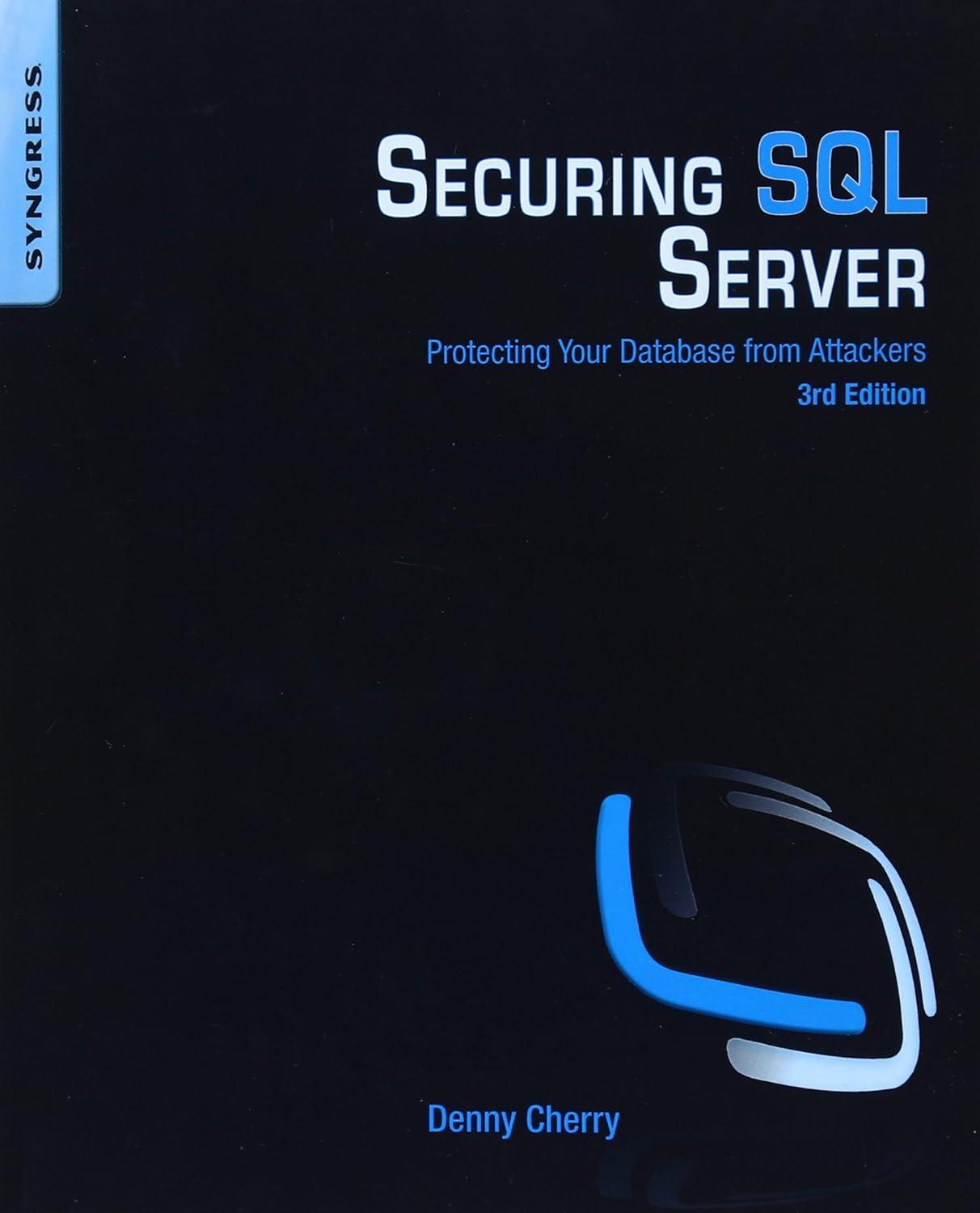Question
Write the isDisjoint method for this data structure. This is a bool method that takes one parameter of type Set. The method returns true if
Write the isDisjoint method for this data structure. This is a bool method that takes one parameter of type Set. The method returns true if the owning set and the parameter set are disjoint where two sets are said to be disjoint if they have no elements in common. You may find it helpful to use the member function when you write the isDisjoint method.
*use C++ syntax
code:
#include
using namespace std;
#include "Set.h"
Set::Set(){
// Note #1: The array named elements has already been created (we do not have to)
// Note #2: However, the array (when created) happens to contain whatever 'junk' values
// were in memory at that location beforehand
size = 0;
}
// ==========================================================================================
bool Set::isMember(int item){
// Iterate through each item in the elements array ...
for(int i = 0; i < size; i++){
// If we find a match, we can return true immediately ...
if(elements[i] == item){
return true;
}
}
// Otherwise, if we go through the entire array and no match is found, then return false
return false;
}
// ==========================================================================================
void Set::insert(int item){
if(size == MAX){
cout << "Error: The set is full already" << endl;
}
else if(!isMember(item)){
// We use the isMember( ) method to return True/False whether the item is already
// in the set -- since Sets are not allowed to contain duplicate items
elements[size] = item;
size++;
}
}
int Set::cardinality(){
return size;
}
void Set::display(){
cout << "{ ";
for(int i = 0; i < size; i++){
cout << elements[i] << " ";
}
cout << "}";
}
void Set::remove(int numRemove){
if(isMember(numRemove)){
for(int i = 0; i < size; i++){
if(elements[i] == numRemove){
elements[i] = elements[size-1];
size--;
}
}
}
}
void Set::computeUnion(Set a, Set b){
for(int i = 0; i < a.size; i++){
insert(a.elements[i]);
}
for(int j = 0; j < b.size; j++){
insert(b.elements[j]);
}
}
void Set::computeIntersection(Set a, Set b){
for (int i = 0; i < a.size; i++){
for(int j = 0; j < b.size; j++){
if(a.elements[i] == b.elements[j]){
insert(a.elements[i]);
}
}
}
}
void Set::computeDifference(Set a, Set b){
for (int i = 0; i < a.size; i++){
for(int j = 0; j < b.size; j++){
if(a.elements[i]==b.elements[i]){
remove(a.elements[i]);
}
else{
insert(a.elements[i]);
}
}
}
bool Set::isSame(Set a){
for(int = 0; i if(!a.isMember(elements{i})){ return false; } } return true; } bool Set::isDisjoint(Set a){ } }
Step by Step Solution
There are 3 Steps involved in it
Step: 1

Get Instant Access to Expert-Tailored Solutions
See step-by-step solutions with expert insights and AI powered tools for academic success
Step: 2

Step: 3

Ace Your Homework with AI
Get the answers you need in no time with our AI-driven, step-by-step assistance
Get Started


